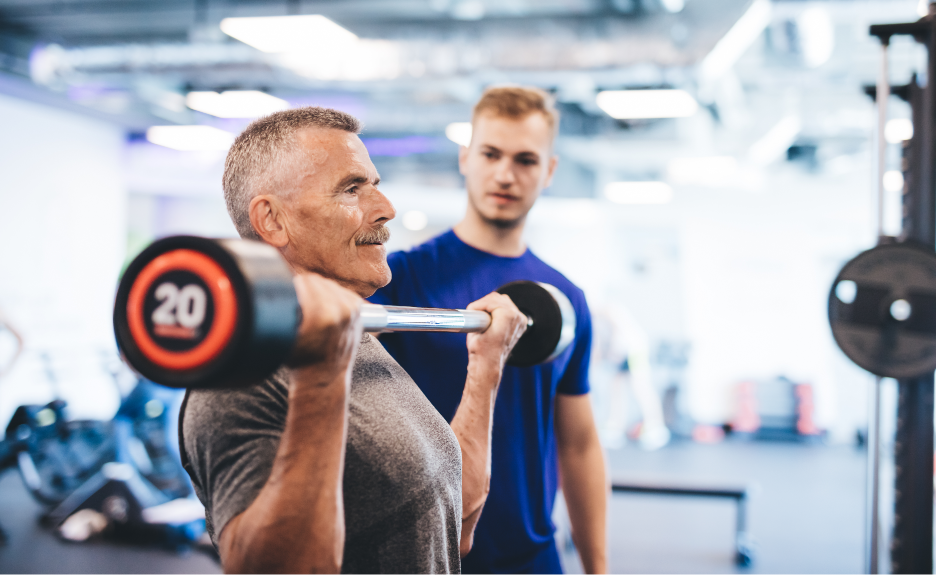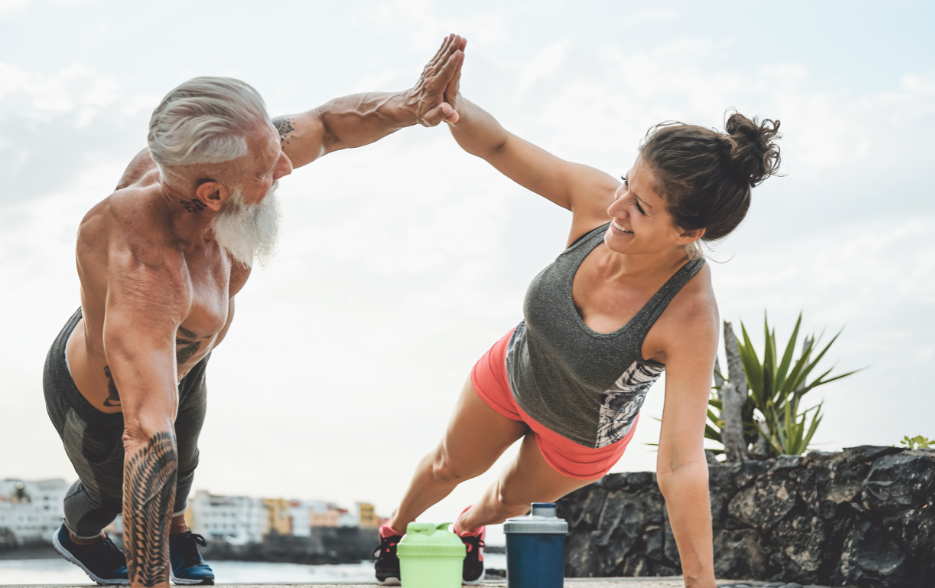I believe we can all agree that a life not just lived, but lived well, is an aspiration many of us share. Strength, both physical and mental, is a cornerstone of this vision, more so as we age. You may be wondering why the emphasis on strength, particularly as we age? It’s simple, really. Our ability to enjoy life’s full spectrum hinges on how well we maintain our bodies; strength is a key element of that maintenance.
Consider how physical strength influences everything from our mobility to our independence. As I set the stage to look into this topic, it’s essential to grasp the profound relationship between sustaining muscular strength and preserving a well-rounded, fulfilling life as we age. It goes way beyond just getting by; it’s about thriving, seizing each day with vigor.
In fact, experts like Peter Attia, who has extensively researched health and longevity, suggest that constructing a life designed to outlive today means making a commitment to strength-building exercises. Attia’s insights illuminate a pathway, underscoring the significance of strength as not just beneficial but vital for a life well-extended into our later years.
This opening section serves as our foundation. We’ll explore why bolstering our physical strength is integral to aging gracefully and why, without it, we risk diminishing the quality of life we could otherwise enjoy. So, I invite you to stay with me as we unpack the marvels of strength and its impact on longevity in the sections that follow, drawing from the expertise of figures like Attia and the collective wisdom of the medical community.

The Longevity Prescription: Strength as a Pillar of Health
The search for the fountain of youth isn’t just a mythic quest; it’s a modern pursuit grounded in the sciences of health and longevity. A key factor that has emerged in this quest is the role of physical strength. Beyond the aesthetic appeal, strength is a foundation for a robust, durable life, especially as we age.
Think about the quality of life you envision in your older years. Strength isn’t just about the capacity to lift heavy objects; it’s about maintaining the independence to perform daily tasks, the resilience to overcome illness, and the agility to prevent falls. Indeed, if we wish to not just live longer but better, we must cultivate and preserve our physical strength.
Peter Attia, a respected longevity expert, has gone as far as labeling exercise—the most direct path to maintaining strength—as the most powerful ‘longevity drug’ we have. It’s a bold statement, yet one rooted in a growing body of research. Regular physical activity, particularly strength training, correlates strongly with decreased mortality rates.
Exercise is unique in its ability to invigorate both body and mind. As we age, it becomes an integral component of a proactive health strategy, a prioritized prescription with doses of both cardio and strength training. Adopting this approach could mean the difference between a life limited by physical constraints and one that thrives on vitality.
As we prepare to look into the next section, it’s crucial to recognize that while exercise stands as a pillar of health, it’s not simply any exercise that we need—it’s exercise that challenges and builds our aerobic capacity, such as our VO2 max, an element that plays a starring role in the longevity narrative.

The Heart of the Matter: VO2 Max and Lifespan Connection
You might not be familiar with the term VO2 max, but it’s a concept that’s gaining importance in discussions around aging and longevity. VO2 max stands for the maximum volume of oxygen that your body can use, and it’s a metric used to measure cardiovascular endurance. Essentially, it’s about how effectively your lungs, heart, and muscles work together during exercise.
Here’s where it gets interesting: research indicates a solid link between higher VO2 max levels and increased lifespan. This is significant for those of us who are focused on aging well. It’s not just about adding years to life, but life to those years, ensuring that we can remain active, independent, and enjoying life to the fullest.
VO2 max decreases with age, but the decline is much slower in people who stay physically active. This gives us a strong incentive to keep moving. Even more compelling, studies have shown that VO2 max can be improved with regular training, no matter your age. This means there’s always a way to improve your cardiovascular fitness and, by extension, your longevity.
Understanding and improving your VO2 max could be the secret to a healthier, more vibrant older age. Researchers believe that peak aerobic cardiorespiratory fitness, which VO2 max measures, might just be the single most powerful marker of longevity. It’s a number that reflects not just your current health status, but also your future health trajectory.
The way to train for your vo2 max is to do exercises like running, swimming, cycling etc. Do 4 minutes of easy exercise then 2 minutes of intense exercise. Do this 4 times if you can then see how long it takes for your heartrate to return to normal. Start slow and see if you can increase your endurance over time. This is hard and uncomfortable but your body will thank you for it in the long run. Do this once a week.
But there’s more to the story. While VO2 max focuses on the role of cardiovascular endurance, we can’t overlook the necessity of muscle strength. So, the question arises: if improving VO2 max is crucial for longevity, where does strength training fit into the equation? This is the transition to our next crucial topic that impacts our longevity—strength training.

Balancing the Longevity Equation: The Importance of Strength Training Alongside Cardio
It’s easy to assume that a daily jog or spin class is all our bodies need as we get older. Cardiovascular exercise, after all, has a stellar reputation for keeping our hearts healthy. Yet, that’s only one piece of the puzzle. If we truly aim to maximize our older years, strength training warrants the same spotlight. This isn’t just my take on the matter; it’s supported by a wealth of research and insight from experts like Dr. Peter Attia.
Strength training, sometimes overshadowed by its more popular cardiovascular counterpart, is just as integral for our aging bodies. It’s about more than building muscles or lifting weights; strength training preserves bone density, improves balance, and sustains functional independence. Maintaining muscle mass keeps our metabolism firing, supports joint health, and reduces the risk of injuries, all of which are crucial for a long and active life.
But perhaps the most compelling argument for incorporating strength exercises comes from their positive impact on our metabolic health. Sarcopenia, the age-related loss of muscle mass and strength, can be significantly mitigated through resistance training. Not only does this help preserve mobility, but it also maintains glucose metabolism, which is essential for managing blood sugar levels and preventing metabolic diseases.
Dr. Attia consistently emphasizes the importance of strength training for longevity. He points to the need for a balanced approach to physical activity that includes both aerobic and anaerobic exercises. Using our muscles in varied and challenging ways can bolster their capacity to support us as we age, ultimately contributing to a longer and richer life experience.
Strength and balance can help preventing falls which can be devastating as we age. Falls are by far the leading cause of accidental death in those ages 65 and older-and this is without counting the people who die 3 or 6 or 12 months after their fall pushed them into a long and painful decline. Someone with good muscle mass is less likely to fall and injure themselves, while those with muscle atrophy and sarcopenia increase there risk of falling and injuring themselves so it is important to maintain muscle mass at all costs.
As we anticipate the next segment, we’ll look into actionable ways to make strength training an enjoyable and regular part of our lives. It’s not about overhauling our lifestyles overnight, but rather integrating manageable practices that align with our long-term health goals. This approach is not about reaching peak performance for the sake of accolades; it’s about empowering our bodies to carry us through life with ease.
A Tailored Approach: Integrating Strength into Daily Life for Age-Defying Health
You’ve now grasped the critical role of strength training in promoting a life of enduring health. What remains is to seamlessly weave strength exercises into the fabric of your daily routine. This isn’t about an all-or-nothing approach. Rather, it’s a journey toward incremental changes that lead to significant, sustainable health benefits as we age.
Consider the individual success stories. They are people like you and me, who chose to prioritize their health and found ways to incorporate strength training into their lives. These stories aren’t just motivating; they’re proof of concept that no matter your age or prior fitness level, it’s never too late to start.
Peter Attia, an advocate for longevity, emphasizes the need for a personalized approach to strength training. Start where you are and progress at your own pace. The aim is not to compete with others, but to cultivate a stronger, more resilient version of yourself.
Join a gym and learn to start weight training start slow and gradually increase effort and the amount of weight you can lift and work hard enough to improve all the time but not get injured. If going to a gym is not for you can workout at home. Exercise bands and bodyweight exercises are a great way to start and who knows one day you will put together a home gym like I have done.
I urge you to consult with a healthcare professional or a certified trainer before embarking on any new exercise regime. They can tailor a plan that aligns with your abilities and health goals. It’s vital to approach strength training with care to minimize injury and maximize benefits.
Finally, remember that the pursuit of strength as we age is about enhancing the quality of life rather than merely adding years to it. It’s about being able to enjoy the things you love, longer. So take that first step today, for a stronger tomorrow.